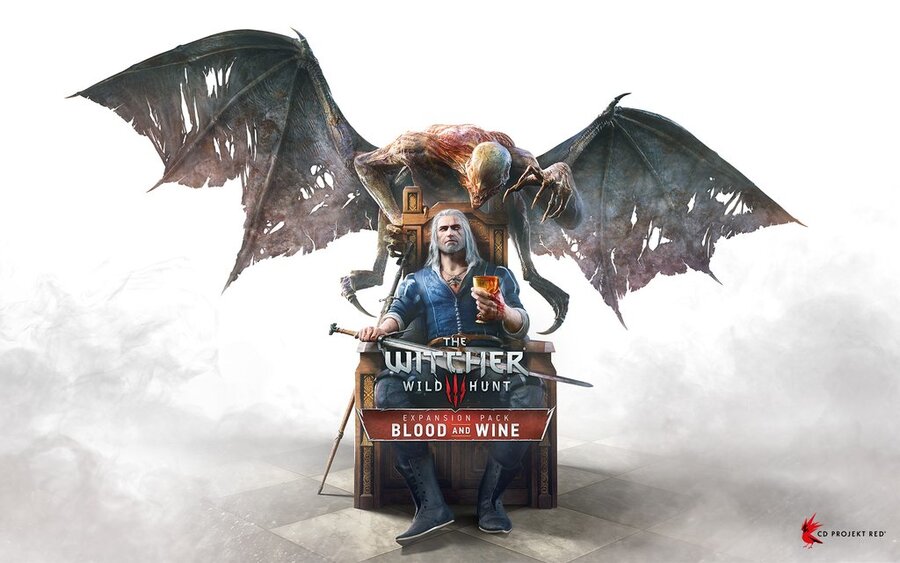
Blood and Wine is a big deal for CD Projekt Red, the Polish studio behind The Witcher 3: Wild Hunt. The title's second and final expansion, Blood and Wine launches at the end of this month, on the 31st May. In order to learn more about it and listen to the developer's own thoughts on the project, we got in touch with senior writer Karolina Stachyra. In the interview below, we discuss the expansion's production and what we can expect from it as players.
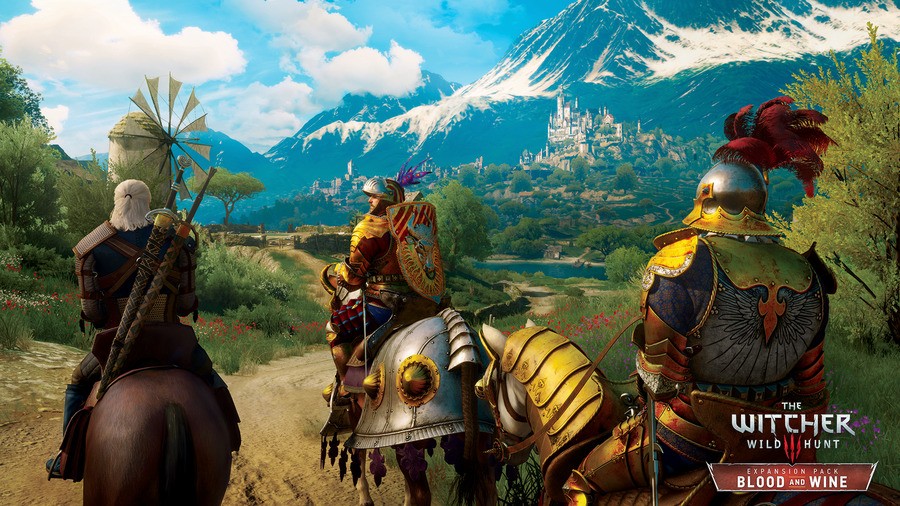
Push Square: To start with, can you tell us what Blood and Wine is about? What can players expect from this expansion?
Karolina Stachyra: Blood and Wine is our farewell to The Witcher 3: Wild Hunt – the last and biggest expansion to the game. It took us a year to make, it's 30 hours long, huge, and we're proud as hell! We're packing it with as much content as possible (over 90 new quests, a new dynamic Point of Interest system) as well as new mechanics that extend the longevity of the game like Mutations, which really supercharge New Game + with new possibilities. There's a ton of stuff to uncover here.
In the plot department, it's a true Witcher story. There's this land of summer, Toussaint. Untouched by war, full of wandering knights and nobles never leaving their homes without a wine glass in their hand. Still, you have this feeling that something's wrong. And, oh boy there is. Underneath that lies a web of secrets, people start dying and the locals just don't have the capacity to handle that. And here's where Geralt, and the players, come in.
The Witcher games have been around for almost 10 years now, and many fans have grown attached to Geralt and his adventures. Blood and Wine is supposedly his last contract, bringing an end to his saga. Was it difficult to create an ending for Geralt? Was it difficult for you, as developers, to say goodbye?
Technically speaking, what you saw in Wild Hunt was the ending, as Blood and Wine (and Hearts of Stone) is a separate story. But I understand the nature of your question and yes, it was difficult, it's always difficult to produce a satisfying ending to something really grand. However, on the other hand, we are also very eager to express our ideas in a totally different setting.
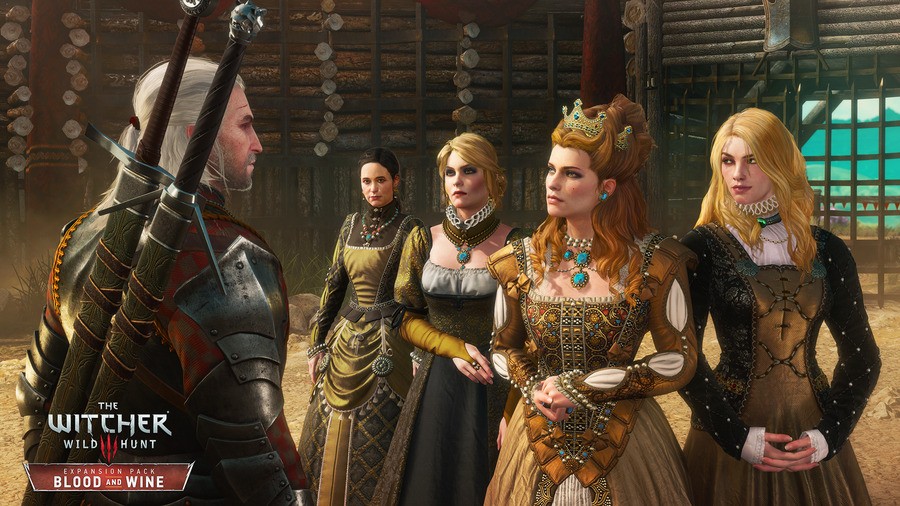
The Witcher 3's previous expansion, Hearts of Stone, played host to some of the game's best characters in Gaunter O'Dimm and Olgierd von Everec. Can we expect to see any similarly prominent characters here? Can you tell us if any characters from the main game will be returning for this final expansion?
Yes, definitely, you can expect characters as fun and complex as O'Dimm or Olgierd. I think it's our thing to create characters who have something more to offer than a few lines of dialogue that point you to a quest marker. Blood and Wine is no different and does feature an array of characters like that. However, I wouldn't like to get into details before gamers actually get a chance to play the expansion and talk to these characters themselves.
Is it any easier to write a more cohesive story in expansions like Blood and Wine, as opposed to the main game, which is so huge? Is it easier to focus on certain elements in a smaller project like Blood and Wine?
I think working on expansions is just different. On one hand, you do have the experience from developing the base game, but, on the other, you raise the bar for yourself because you want this to be even better than the base game or the previous expansion. Plus, you really have a limited amount of time to develop all that. Blood and Wine is about 30 hours of new adventures, but that includes a totally new realm to explore. We needed to create entirely new assets because Toussaint, and its capital Beauclair, have a totally different feel to what gamers saw in Wild Hunt and Hearts of Stone. Even the architecture is different.
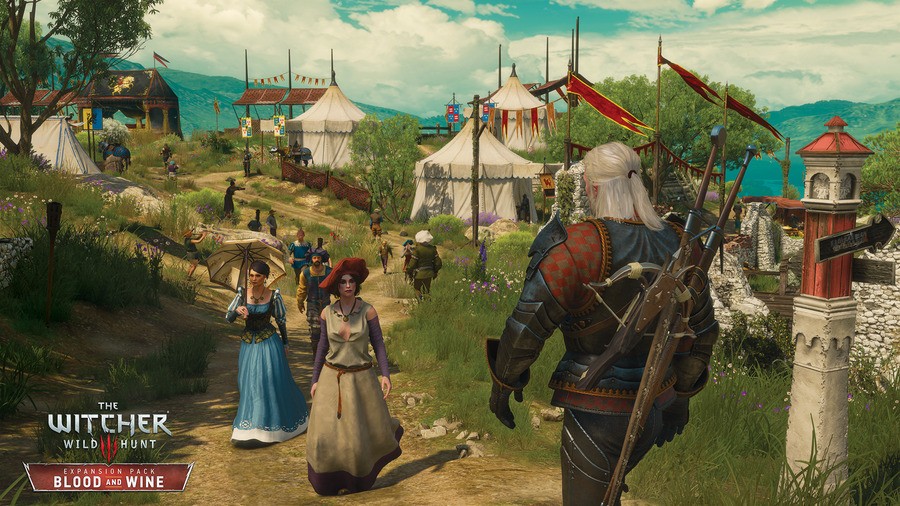
Blood and Wine takes place in Toussaint, a location that hasn't yet featured in The Witcher series of games. Why did you pick Toussaint as a setting, and what sort of environments will we be exploring?
Toussaint is this peaceful land untouched by war, where everyone lives in relative comfort and focuses on the pleasures of life. We chose it because it's a great contrast to what you saw in Wild Hunt, to all that dirty and brutal reality where you need to struggle to survive. Toussaint is the exact opposite – there's the rich old elven palace in Beauclair humans now occupy, there are plenty of vineyards, and you get the general impression that leaving your home without a glass of wine in your hand and a smile on your face is something out of place. And then people start dying. A beast starts killing nobles and they just don't have the resources to handle that. They need Geralt. And this is where the players come in.
We assume that Geralt will be dealing with nobility during his time in Toussaint, and nobles in The Witcher seem to love wearing fancy clothes. We were just wondering, how do you come up with the extravagant clothing designs? What references do you tend to use?
Every region in our game is influenced by some place real. In Wild Hunt, you had Skellige, which was inspired by Nordic and Celtic mythos, and Novigrad, which was very medieval-Amsterdam inspired. In Blood and Wine, in terms of architecture, you'll definitely find a lot of Italy and France. As for the clothing, the pattern is very similar – we try to see what worked in that era or region and adapt it so it looks genuine in our game. Plus, I think we have super talented people on board who, if they weren't working in video games, would definitely be the next big thing on the runways!
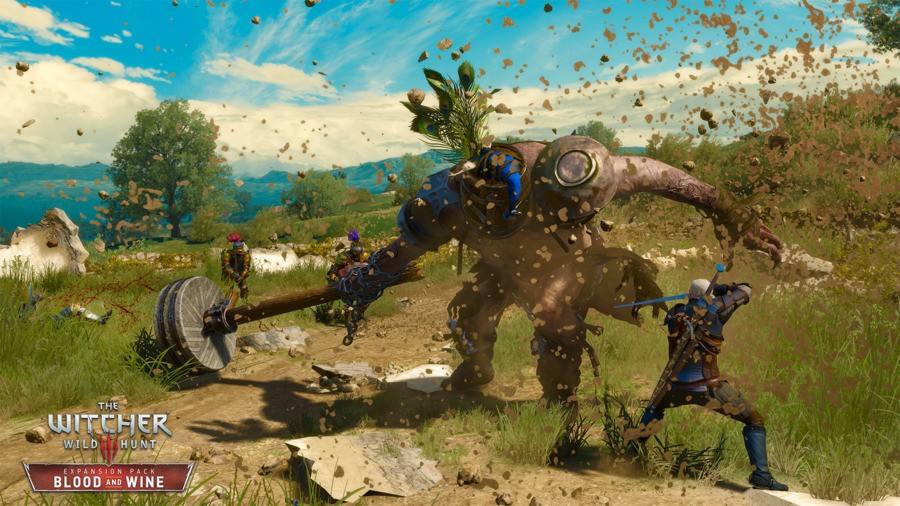
Being the final expansion, will Blood and Wine offer a greater challenge than Geralt's previous adventures? Is there a recommended level for Geralt to be at before starting the expansion, and will it be playable before finishing the story of the main game?
Oh my, even more difficult? Hearts of Stone was pretty hardcore at times! We're definitely adding a lot to the end game experience, if that's what you're asking. We've introduced this special mutation system that allows you to unlock powerful effects for Geralt and further customise your build. You'll have to spend a lot of skill points to get everything unlocked though, so you'll probably be playing with that in New Game + the most. As for the recommended level, yeah, it's very similar to Hearts of Stone, you need to be on level 30-something to have fun. If you're not, much like in Hearts of Stone, we've got a special game mode that will launch the expansion with a leveled up Geralt with unallocated skill points you can distribute yourself.
Will there be new equipment to find and loot in Blood and Wine? Will there be any new systems that can be used to power Geralt up, like the Runewright in Hearts of Stone?
Yes, we've prepared new gear for Geralt. Plus, we've included a whole new level for witcher gear. And I did mention mutations, right? What's super cool though is Corvo Bianco – Geralt's very own vineyard. We decided that if he were to ever retire, he'd want to do that in Toussaint. Players will be able to upgrade it for various in-game buffs, you'll be able to put prize items on display, and a lot of other cool stuff.
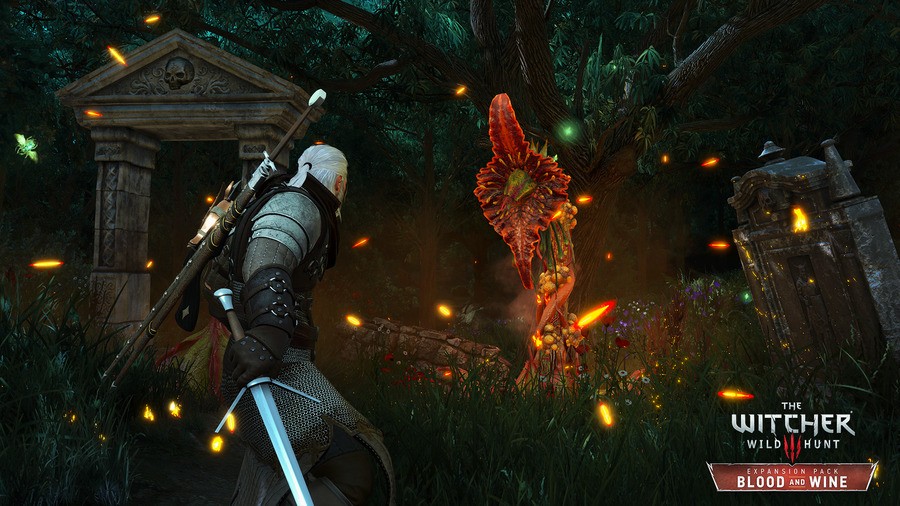
Of course, we cant possibly talk about The Witcher without at least mentioning romance. Will Geralt be involved in any adventures of a more romantic nature in Blood and Wine?
My lips need to remain sealed about this but... [cough] Yes [cough].
Finally, we have to ask: do you have any other plans for The Witcher after Blood and Wine? Will there be any future game updates, or anything like that?
I think we need to rest a bit! But should some bugs be discovered after we launch, we always have the community's back.![]()
Are you ready to kill some more monsters in Blood and Wine later this month? Grab a goblet and enjoy a drink or two in the comments section below.
[Thanks to Robert Malinowski, Radek Adam Grabowski, and everyone at CD Projekt Red for making this interview possible. Special thanks to Karolina Stachyra for taking the time to answer our questions]





Comments 8
Fantastic interview that has got me a little too excited for this expansion!!!!!! Only 10 days now
Cant wait. Hopefully it launches in better condition than Far Harbor. It crashed on me twice last night. Very irritating.
Excellent stuff. Easily one of my top games on PS4. Can't wait for this.
Great interview, great developers
Love the answer to that last question.
Great stuff guys.
@RaymanFan2
Me too.
They assure fans upfront that "we're finally all done BUT, if something needs fixing you know you can count on us to fix it pronto"
Can't wait, great interview!
Show Comments
Leave A Comment
Hold on there, you need to login to post a comment...